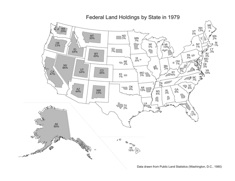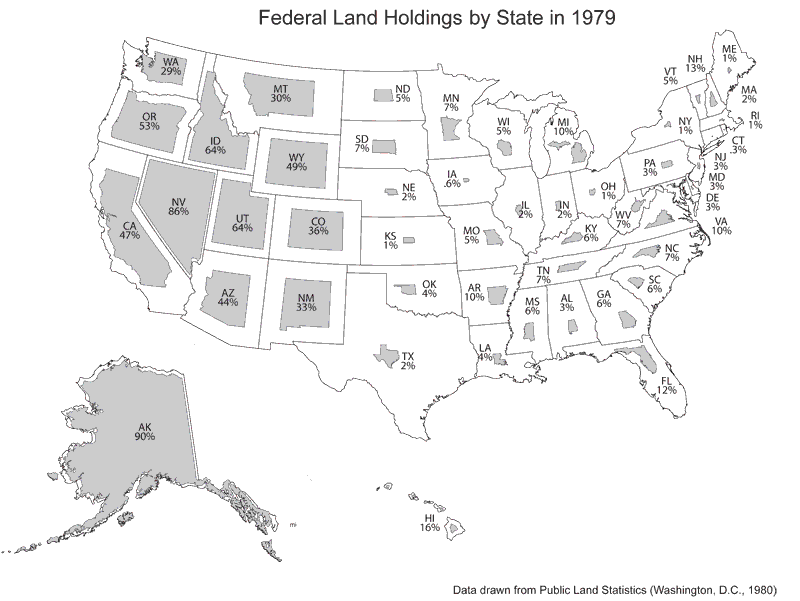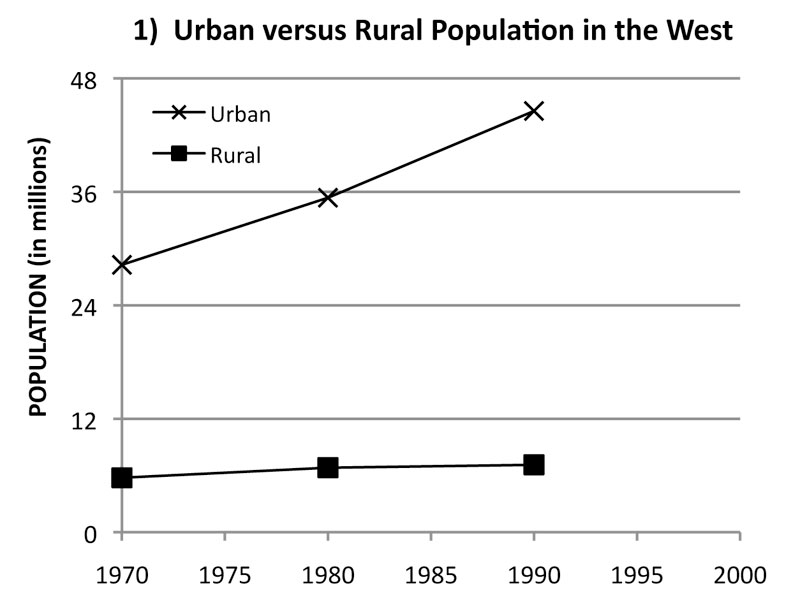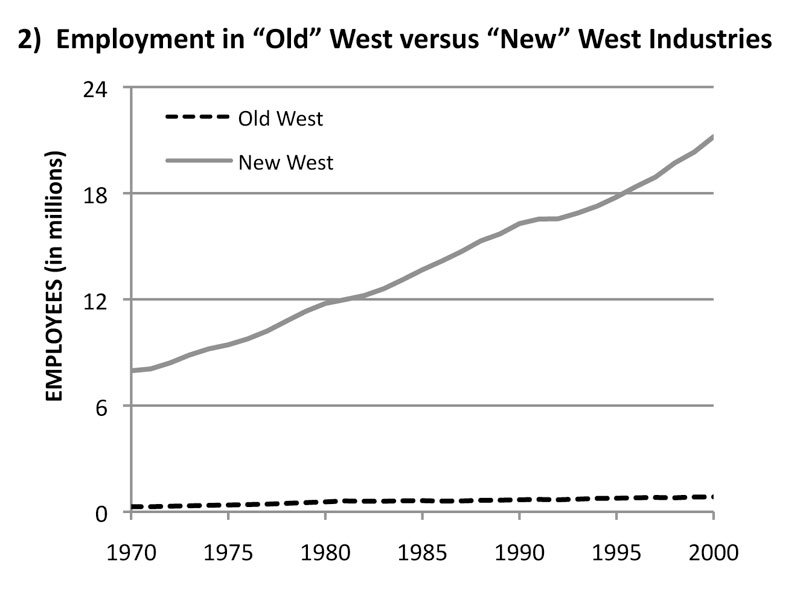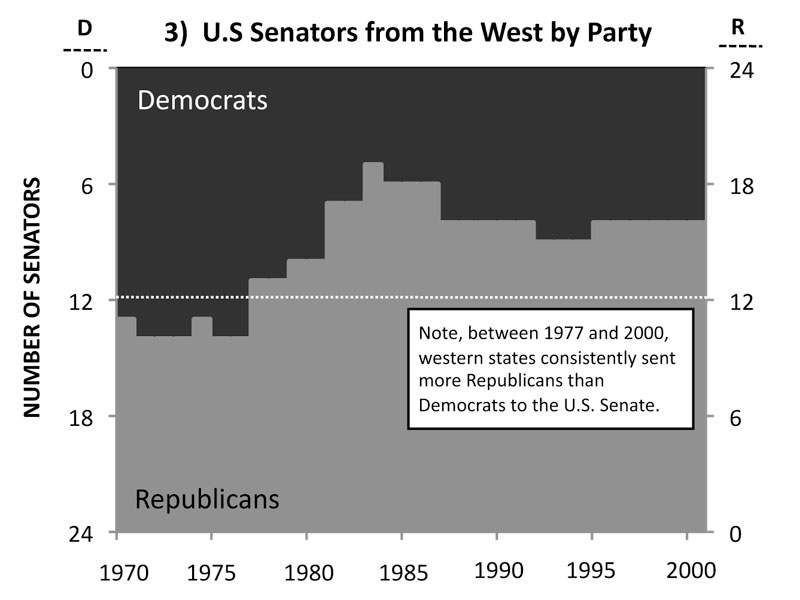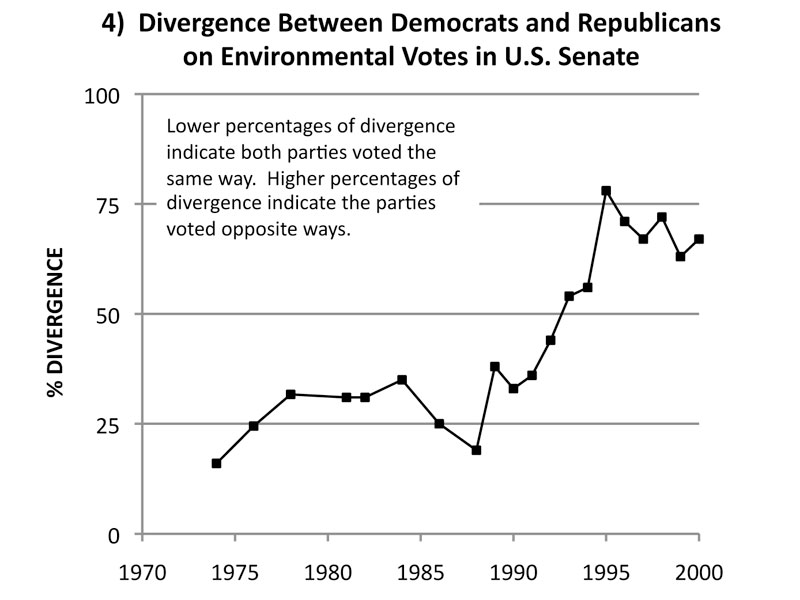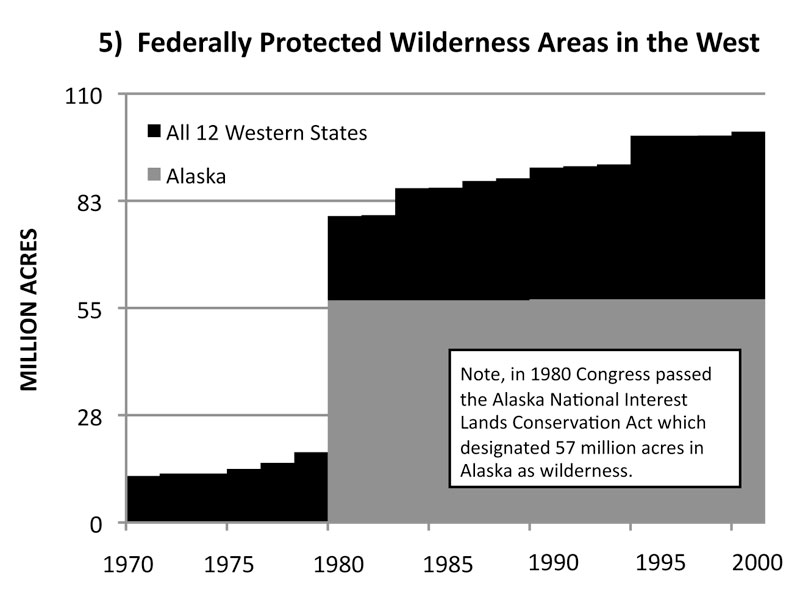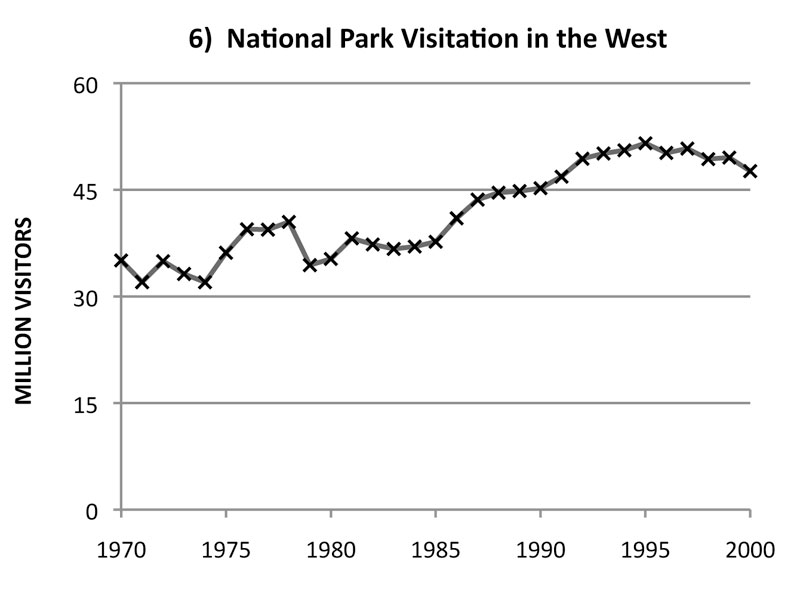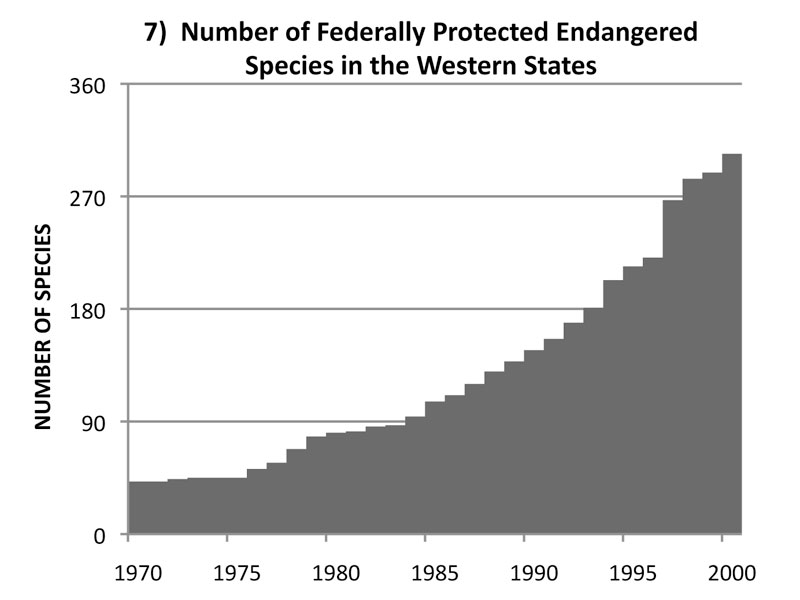Teaching the Article
Exercise 4
All of the materials associated with this exercise are available for download.
A Changing West
My article “‘The Specter of Environmentalism’” examines the rise of opposition to environmental protection in the West. That raises an obvious question: Why the West? The following exercise explores two questions important to historians that help explain why the West was a seedbed for environmental opposition: What is the West? How has the West changed since World War II?
What Is the American West?
Have students brainstorm the places and characteristics that come to mind when they think of the American West. Is the West a distinct region of the United States? Why? Then, ask them to draw the boundaries of the American West on this map. Where did they draw the boundaries? What criteria did they use? Did they follow state boundaries? Did they include California? Alaska? Hawaii? the Pacific Northwest? Did they use some other criteria, such as geographic features? Did they start at the Rocky Mountains? Did they start at the Mississippi River?
Explain to the students that defining the West is an old and important problem for American historians. Indeed, American historians have long been rethinking the map of the West. In 1893, Frederick Jackson Turner famously defined the West as a process of conquering the frontier. In his words, the frontier was the “the meeting point between savagery and civilization” (The Frontier in American History, 1921). In 1931, in The Great Plains, Walter Prescott Webb defined the West in terms of its geography and climate: it was flat, treeless, and, most important, it was dry. Webb argued that for those reasons, the West demanded a different type of agriculture and society, which would distinguish the region from the rest of the nation. More recently, historians have argued that the West is best distinguished by its diversity—both as a contested meeting place of different cultures and a mosaic of different environments. All of those definitions of the West have merits and problems, which are worth discussing.
For this article, I draw on another framework: the importance of the federal government and its bureaucracies in shaping the modern American West. Since the start of the twentieth century, the federal government has been instrumental in facilitating the growth of the American West. It has built and managed dams and highways that have made western life possible. It has funded industries—such as defense and electronics—that have transformed the West. And the federal government has been the region’s largest landlord. One half of the land in the West is owned and managed by the federal government: these are the national parks, forests, wildlife refuges, and other lands (including military bases and testing grounds) that define the western landscape. This map illustrates the concentration of federal land in the West.
How Has the West Changed since World War II?
Many westerners, especially those in rural areas, take pride in their independence and connection to the land. But in the 1970s and 1980s, loggers, miners, hunters, and recreationists grew angry with the efforts of environmentalists to protect public lands. Indeed, in those years, environmentalists succeeded in dramatically expanding the scope of both the protected areas and the federal lands to be reviewed for potential wilderness designation. In 1964, 9 million acres were protected as wilderness and an additional 60 million acres were scheduled for review nationwide. In 1979, 21 million acres were protected as wilderness and more than 200 million additional acres were scheduled for review nationwide. As the scope of wilderness protection and reviews expanded, the future of logging, mining, and other extractive industries on public lands, especially in the West, grew increasingly uncertain.
Environmentalists and their agenda posed an obvious challenge to the West’s natural resource industries and the communities that depended on them. But, as westerners knew, the changes that were sweeping the West in the post–World War II era were not just the work of environmentalists, nor were they limited to changes in the natural resource industries. The changing West was the product of broad structural shifts that hinged on the region’s changing population, economy, and politics, and were driven by changes important to the West and nation. Understanding the rise of environmental opposition requires considering not only the expanding scope of environmental protection, but also these broader changes important to the West.
Historians and other writers have described a broad transition from an “old” West to a “new” West in the twentieth century. Old industries such as logging, mining, and ranching were eclipsed by industries such as military defense, computer and information technology, entertainment and tourism, and financial services. Urban metropolises such as Las Vegas, Los Angeles, and San Diego flourished as the population in rural areas remained steady. And people began to revalue the western landscape, emphasizing more its scenic, recreational, and ecological merits than its value for resources. Such a simple a dichotomy simplifies much and overlooks many important details, but as a broad concept it reveals important changes in the post–World War II West that charged debates over public lands. Indeed, environmental opponents often seemed to be trying to guard the old West against the forces of the new.
This handout includes eight different sets of data that document changes in the West’s population, labor, politics, and environment between 1970 and 2000. First, have students examine each graph individually: What is interesting about the data? To what extent is the data consistent with the interpretation of a transition from an old to a new West? What can we infer about changes in the management of public lands, natural resources, and wildlife from this data? Second, examine several sets of data together: What stories do these graphs tell about the West between 1970 and 2000? Which changes are unique to the West? Which trends might be related? What hypotheses can students make regarding those relationships? Encourage them to brainstorm about how they might go about investigating those potential relationships.
Maps
- Blank map of the United States with state names.
- Map showing the percentage of federal lands in each state.
Handout
Further Reading
- Frederick Jackson Turner, The Frontier in American History (New York, 1921).
- Walter Prescott Webb, The Great Plains (Boston, 1931).
For a discussion of boundaries and definition of the West, see: David Emmon’s “Constructed Province: History and the Making of the Last American West” and the responses to it in the Western Historical Quarterly.
- David M. Emmons, “Constructed Province: History and the Making of the Last American West,” Western Historical Quarterly, 25 (Winter 1994), 437–59.
- Joan M. Jenson, A. Yvette Huginnie, Albert L. Hurtado, Charles Reagan Wilson, Edward L. Ayers, William Cronon, and David Emmons, “A Roundtable of Responses,” ibid., 461–88.
For a brief introduction to the old West and the new West, see Charles Wilkinson, “Paradise Revised,” in Atlas of the New West: Portrait of a Changing Region. The full atlas provides an extraordinary compendium of maps, statistics, and other information relevant to the changing West (including the idea for the map of federal land holdings above). As Wilkinson notes, the new West and the old West are terms that should be used “gingerly.”
- Charles Wilkinson, “Paradise Revised,” in Atlas of the New West: Portrait of a Changing Region, ed. William Riebsame (New York, 1997), 15–18.
For a critical assessment of the new West that makes clear its many problematic similarities to the old West, see:
- Joseph E. Taylor III, “The Many Lives of the New West,” Western Historical Quarterly, 35 (Summer 2004), 141–65.

